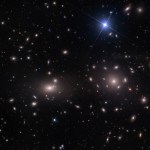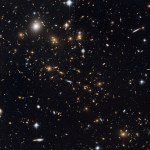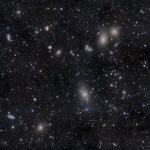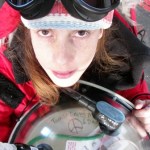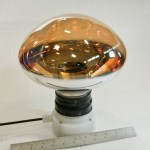neutrinos
"A cosmic mystery of immense proportions, once seemingly on the verge of solution, has deepened and left astronomers and astrophysicists more baffled than ever. The crux ... is that the vast majority of the mass of the universe seems to be missing." -William J. Broad
It was in the 1930s, looking at dense clusters of galaxies (like Coma, below), that Fritz Zwicky first noticed that the mass in the Universe didn't add up.
Image credit: Adam Block / Mount Lemmon SkyCenter / University of Arizona.
We knew how gravity worked, so it was pretty straightforward -- based on how the galaxies within…
"These neutrino observations are so exciting and significant that I think we're about to see the birth of an entirely new branch of astronomy: neutrino astronomy." -John Bahcall
You've been around here long enough to know about the Big Bang. The vast majority of galaxies are speeding away from us, but more than that, the farther away they are from us, the faster they appear to be receding.
Image credit: ESA/Hubble, NASA and H. Ebeling.
But it's more than that; when you look at a distant galaxy, because the speed of light is finite, you're actually looking at it in the distant past.…
"A cosmic mystery of immense proportions, once seemingly on the verge of solution, has deepened and left astronomers and astrophysicists more baffled than ever. The crux... is that the vast majority of the mass of the universe seems to be missing." -William J. Broad
Three classic observations -- the Hubble expansion of the Universe, the leftover cosmic microwave background radiation, and the observed abundance of the light elements -- lead us inevitably to modeling our Universe as having begun in a hot, dense state from which it expanded and cooled. There is no other explanation that agrees…
"Other than the laws of physics, rules have never really worked out for me." -Craig Ferguson
Earlier this week, evidence was presented measuring a very rare decay rate -- albeit not incredibly precisely -- which point towards the Standard Model being it as far as new particles accessible to colliders (such as the LHC) go. In other words, unless we get hit by a big physics surprise, the LHC will become renowned for having found the Higgs Boson and nothing else, meaning that there's no window into what lies beyond the Standard Model via traditional experimental particle physics.
Image credit:…
Not many Israelis make it all the way to the South Pole. (In fact, very few people go there, at all. Not only is it really, really cold, it is extremely difficult and expensive to transport people, gear and necessities to this remote and inhospitable corner of the earth.) So when we learned that Dr. Hagar Landsman, who recently joined the Weizmann Institute’s Physics Faculty, has a part-time gig at the IceCube neutrino detector array, we simply had to write about her. Landsman’s specialty is particle detectors, and IceCube has 5,000 of them buried under several kilometers of ice. In her brief…
After announcing in September that they had detected neutrinos traveling faster than the speed of light, OPERA researchers immediately set out to replicate their results. On Uncertain Principles, Chad Orzel says they reconfigured the neutrino beam, which originally fired 10,000-nanosecond pulses, "to produce much, much shorter pulses—less than 10ns. And while they've only been running this way for a few weeks, they've already got 20 neutrino detections from the shorter pulses, and they see exactly the same timing anomaly." This confirmation rules out problems with the original experimental…
Last month, a team of researchers announced that their neutrinos appeared to be travelling faster than the speed of light. Ethan Siegel explains that the mass of a neutrino is "less than one-millionth the mass of the electron, but still not equal to zero" and "should move at a speed indistinguishable from the speed of light." Meanwhile the OPERA team had to smash 1020 protons just to detect 16,000 neutrinos—and account for every source of delay an uncertainty in their experimental setup. On Uncertain Principles, Chad Orzel explains that the researchers used GPS satellites to measure the…
On Brookhaven Bits & Bytes, Steve Kettell brings us up to speed on a new research project taking place beneath a mountain in southern China. The object of study is the neutrino, which can "pass through the Earth and through much of the universe without interacting with anything." Ethan Siegel explains on Starts With a Bang: "Neutrinos only interact gravitationally and through the weak force. They have no electromagnetic interactions." And because they have no charge, neutrinos are free to pass between the atoms that make up tangible matter. Steve writes that neutrinos from the sun…
This guest post is by Brookhaven Lab physicist Steve Kettell, the Chief Scientist for the U.S. Daya Bay Neutrino Project in southern China. Kettell received his Ph.D. in 1990 from Yale University and is the leader of Brookhaven's Electronic Detector Group.
Steve Kettell
Neutrinos are downright weird!
Produced in prodigious numbers in the sun, supernovae, nuclear reactors and particle accelerators, neutrinos are extremely hard to detect because they hardly interact with other material at all.
If we think about photons from the sun hitting blacktop during the summer, it is quite obvious…
How do scientists make glass stronger? Break it.
Brookhaven Lab physicists and engineers take this hands-on approach a step further. In order to strengthen the design of glass bulbs known as photomultiplier tubes, the researchers submerge the devices in 500,000 gallons of pressurized water, punch a small hole through their sides, and watch as the glass cracks, crunches, and, just milliseconds later, implodes (see videos below).
The implosion of a photomultiplier tube in a tank at BNL, as seen through combined high-speed camera images. Time scale: 6,000 frames per second.
Fifty thousand…
